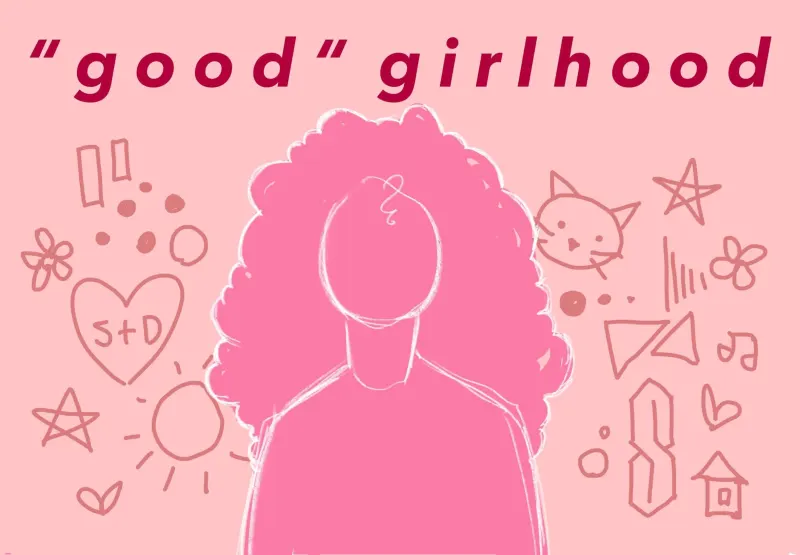In her column “‘Good’ Girlhood,” Blyss Cleveland reviews female-centered coming-of-age films.
Editor’s Note: This article is a review and includes subjective thoughts, opinions and critiques.
From issues with ownership and music rights to a loss of the original footage, films fall out of distribution for a variety of reasons. For “Drylongso,” Cauleen Smith’s film that was released in 1998, it is ironic that it was lost to time until it was restored last year and added to the Criterion Collection. Smith completed the film while still enrolled in film school, and its meta-narrative tackles an ongoing problem: How do you document the ordinary and sometimes wonderful happenings of Black life amidst the specter of violence?
Protagonist Pica Sullivan (Toby Smith) has tasked herself with addressing this challenge. She is a photography student trying to showcase her Polaroid portraits of Black boys and men who live in her West Oakland neighborhood. Her vision for her art is clear — Black boys and men are endangered and she wants to preserve images of them. However, she is running up the end of the semester and her chaotic home life makes it challenging to focus. There’s also a serial killer terrorizing the neighborhood, but this remains in the background until it doesn’t.
Within this maelstrom, Pica becomes friends with Tobi (April Barnett). They first meet during a chance encounter after Tobi’s boyfriend abruptly pulls over and kicks her out of his car. Tobi is stranded and Pica (who was seated on her porch and witnessed Tobi’s boyfriend’s aggression) offers to call her a cab. The girls cross paths a few times before they go from acquaintances to friends. Once they are in each other’s lives, they each fill an empty space they didn’t know was unoccupied until the other one arrived.
Pica’s front porch provides refuge from the constant ruckus inside. She lives with her mother, Gloria (Channel Schafer), who is as skilled at throwing lively functions as she is at forgetting to treat Pica like her daughter instead of a roommate. Holding court on the porch also allows her to see Malik (Will Power), a fellow artist who is sweet on Pica. He passes by on his bicycle and inquires “Hey, when you gonna take my picture, girl?” A half-joke, half-complaint, Malik seems to be the only man in the neighborhood who Pica has not asked to pose for a portrait. The viewer learns this omission from her archive is not an oversight — she is waiting for the right moment.
Smith portrays Pica as someone who alternatively moves through the world with assertiveness and self-consciousness. She is frequently truant and when she does show up to class, she is late, listens to the end of her classmate’s confusing presentation and interrupts the polite discussion with a biting critique. When she meets with her professor, Mr. Yamada (Salim Akil, who co-wrote the script with Smith), Pica is initially reluctant to explain the concept behind her portraits, nor why she insists on using a Polaroid in a 35mm class. Instead, she imagines herself confidently reciting statistics about the high imprisonment rates and low life expectancy of Black men in America.
In a later scene with Professor Yamada, Pica’s reverie comes into stark relief. As we learn the reason for Pica’s choice of medium, the audience is shown that people cannot be what they cannot see.
It is a bold choice to tell a story about violence against Black males through a coming-of-age story about a young Black girl. However, being attentive to different ways of seeing and being in the world is the central message of the film. As Tobi tries to separate from her abusive boyfriend, she experiments with a masculine style of dress. In one scene, nervous white pedestrians jump out of her path while she’s roaming around donning her new look. When Pica asks if she’s afraid of being shot, Tobi retorts “I was afraid of that when I was a girl.” Black girls and women exist under a different, albeit no less deadly, threat of violence.
The serial killer who has been targeting male and female victims in the neighborhood is another source of neighborhood violence, as revealed by news reports throughout the film. While there is some resolution to this murder-y mystery, the plot line is a parable that suggests focusing on structural violence can obscure individual threats.
Despite the heavy themes, the film has plenty of comedic moments. During a date with Malik, Pica chides him for not being a very curious person. He concedes that he’s not, but she says it like it’s a sin or something! If the true measure of a man is his ability to accept defeat with grace, Malik is truly undefeated.
Gloria is also given surprising depth. Although she is depicted as a grown-up party girl who spends her days grooving or lounging around the house, when Pica asks for help, Gloria goes above and beyond. Learning to rely on others is an operative skill that Pica learns. Her mother, on the other hand, learns that giving her daughter space doesn’t mean keeping her at a distance.
The title “Drylongso” is derived from a Gullah Geechee word for ordinary. Like many terms found in Black dialect, the word has multiple meanings and also indicates the standard and acceptable ways of doing things. The word is a fitting title for a touching independent gem that is ultimately a tribute to the people of Oakland. It is a vintage film about a contemporary problem — how do you document Black life even as it continues to be constrained? Make art that captures the beauty of people and places, and if it gets lost, find it and make it available to the next generation.
